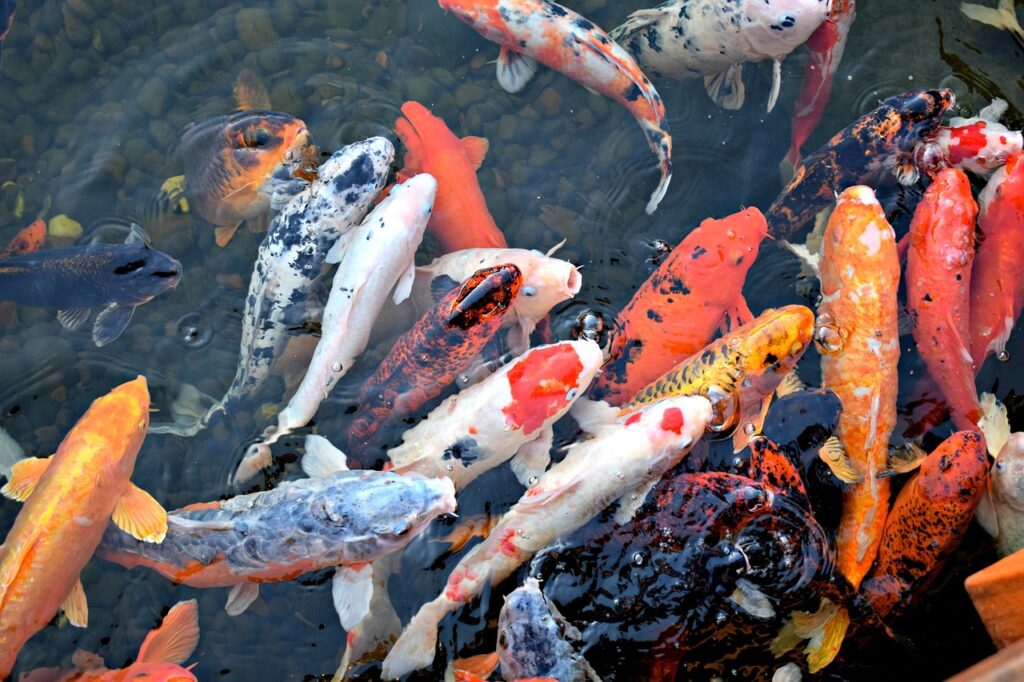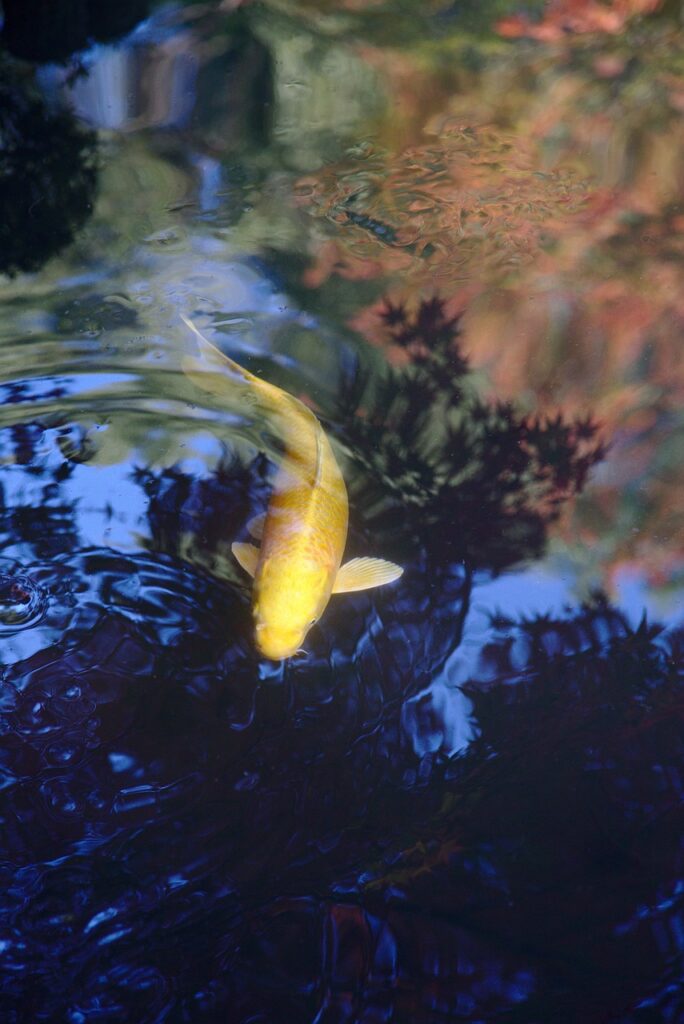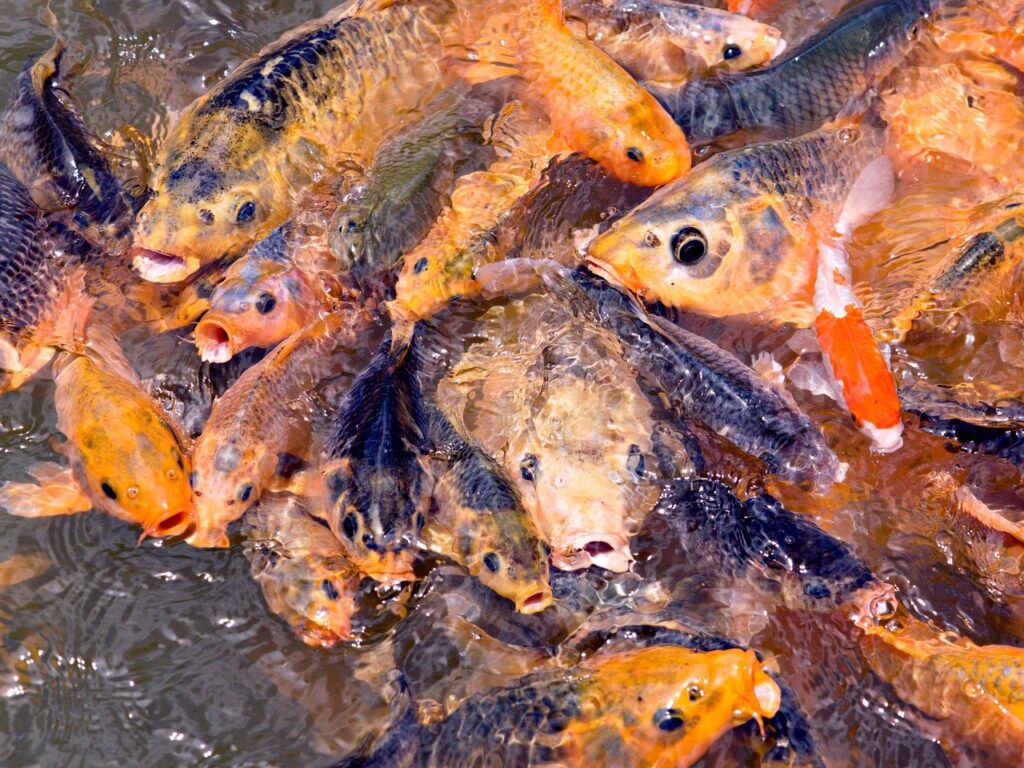I recently came across a fascinating question that got me pondering: can you use fine salt in a koi pond? As someone who enjoys taking care of koi fish, I was eager to delve into this topic. After conducting some research and consulting with experts, I discovered some intriguing insights that I can’t wait to share with you.
So, let’s dive into the world of salt and koi ponds to find out if fine salt is a suitable addition to your aquatic haven.
What is fine salt?
Fine salt, also known as table salt or cooking salt, is a granulated form of salt that is commonly used in culinary applications. It is made up of tiny crystals that dissolve easily in water, which makes it a convenient option for various purposes.
Fine salt is typically mined from underground salt deposits or extracted from seawater through evaporation methods. It undergoes a refining process to remove impurities and is then ground into a fine texture, making it suitable for everyday cooking and seasoning.
Effects of salt on koi
Salt plays a significant role in maintaining the health and well-being of koi fish in a pond. When used appropriately, it can have several beneficial effects on these graceful creatures.
Osmoregulation in koi
Osmoregulation refers to the process by which organisms maintain the balance of water and solute concentrations within their bodies. Koi fish, like many other aquatic species, are osmoregulators, meaning they actively regulate the salt and water levels in their bodies to adapt to changes in their environment.
Adding salt to a koi pond helps create a stable salinity level, making it easier for the fish to maintain osmotic balance. This, in turn, alleviates stress and enhances the overall health of the koi.
Balancing water chemistry
In a koi pond, the water chemistry is of utmost importance for the well-being of the fish. Salt acts as a natural buffer, stabilizing the pH levels and alkalinity of the water. It helps to prevent drastic fluctuations in these parameters, which can be detrimental to the health of koi. By maintaining a balanced water chemistry, salt promotes a stable and favorable environment for the koi to thrive in.
Promoting koi health
Salt has been observed to have various positive effects on the health of koi fish. It helps ward off parasites, bacteria, and fungi that can cause diseases and infections. Salt also aids in the healing process of wounds and injuries, as it possesses antiseptic properties.
Furthermore, salt can boost the immune system of koi, making them more resistant to illnesses and increasing their overall vitality. By incorporating salt into their aquatic environment, koi keepers can contribute to the long-term health and longevity of their beloved fish.

Appropriate salt levels for a koi pond
Determining the right salt levels for a koi pond is crucial to achieve the desired benefits without posing any harm to the fish or the pond ecosystem.
Determining the right salt levels
The appropriate salt concentration for a koi pond depends on various factors, such as the specific needs of the koi, the pond volume, and the overall health of the fish. As a general guideline, a salt concentration of 0.1% to 0.3% (1 to 3 pounds per 100 gallons of water) is considered suitable for koi ponds.
However, it is essential to consult with a koi expert or a veterinarian specializing in fish health to determine the exact salt levels that would be most beneficial for your specific pond and fish.
Measuring salt concentration
Accurately measuring the salt concentration in a koi pond is vital to maintain the appropriate levels. A salinity refractometer is an excellent tool for this purpose, as it provides precise readings of the salt content in the water.
It is important to note that regular testing and monitoring of the salt concentration are necessary, as evaporation and water changes can affect the levels over time. By consistently measuring the salt concentration, koi keepers can make adjustments as needed to ensure the optimal environment for their fish.
Using fine salt in a koi pond
Fine salt, with its fine texture and easy solubility, can be a convenient option for incorporating salt into a koi pond.
Benefits of using fine salt
One of the significant advantages of using fine salt is its ability to dissolve quickly in water. This ensures that the salt is evenly distributed throughout the pond, providing consistent benefits to the koi fish. Additionally, fine salt is readily available in most households, making it easily accessible for koi keepers. Its affordability and versatility make it a popular choice for maintaining salt levels in a koi pond.
Considerations for using fine salt
While fine salt can be suitable for many koi ponds, there are some factors to consider before using it. It is important to ensure that the fine salt used is pure and does not contain any additives, such as iodine or anti-caking agents, as these can be harmful to koi.
It is recommended to use non-iodized, pure fine salt to avoid any potential adverse effects on the fish or the pond ecosystem. Additionally, it is essential to dissolve the fine salt properly before adding it to the pond, as undissolved salt crystals can irritate the koi’s skin and gills.

How to use fine salt in a koi pond
Incorporating fine salt into a koi pond requires a step-by-step approach to ensure its effective and safe use.
Step 1: Dissolving the fine salt
To dissolve the fine salt, fill a clean container with pond water and gradually add the salt while stirring. It is essential to dissolve the salt completely to avoid any undissolved crystals that could harm the koi. Once the salt is fully dissolved, the mixture can be added to the pond.
Step 2: Introducing the salt into the pond
Carefully pour the dissolved salt mixture into the pond, distributing it evenly throughout the water. It is best to pour the mixture in different areas of the pond to ensure thorough mixing. Avoid pouring the mixture directly onto the koi or creating strong turbulence that could distress the fish.
Step 3: Monitoring salt levels
After adding the fine salt to the pond, it is crucial to monitor the salt levels regularly. Use a salinity refractometer to measure the salt concentration and make adjustments as needed to maintain the desired levels. Routine water tests will help ensure that the salt concentration remains within the appropriate range for the health and well-being of the koi.
Alternatives to fine salt
While fine salt is a commonly used option, there are alternative methods for pond maintenance that koi keepers can explore.
Non-salt methods for pond maintenance
Some koi keepers prefer non-salt methods for pond maintenance, relying on other techniques to achieve similar results. These methods may include the use of natural products, such as beneficial bacteria or herbal extracts, that promote water quality and fish health. Additionally, implementing proper filtration systems and regular water changes can also contribute to maintaining a healthy pond environment for the koi.
Using rock salt or kosher salt
For those who prefer alternative salt options, rock salt or kosher salt can be considered. These types of salt are typically coarser in texture compared to fine salt but can still be used effectively in a koi pond. It is essential to choose high-quality, pure rock salt or kosher salt without any additives. Like with fine salt, it is crucial to dissolve these salts completely before adding them to the pond to prevent any potential harm to the koi.

Potential risks and drawbacks of using fine salt
While fine salt can provide several benefits to a koi pond, there are potential risks and drawbacks to be aware of.
Salt toxicity to plants and other aquatic life
One of the primary concerns when using salt in a koi pond is the potential adverse effects on plants and other aquatic life. Salt can be detrimental to certain species of plants and could harm beneficial bacteria that are essential for a healthy pond ecosystem. It is important to consider the specific requirements of the koi and other pond inhabitants before incorporating salt and to monitor the effects on the overall pond environment.
Accidental overdose of salt
Using too much salt in a koi pond can be harmful to the fish and may lead to salt toxicity. Accidental overdosing can occur if the salt concentration is not accurately measured or if excessive amounts of salt are added during routine maintenance. Careful monitoring and adherence to recommended salt levels are crucial to avoid any potential harm or stress to the koi.
Potential impact on biological filtration
Salt can have an impact on the beneficial bacteria responsible for biological filtration in a koi pond. These bacteria help break down harmful compounds and maintain water quality. While moderate salt concentrations generally do not pose a significant problem, excessive or prolonged exposure to high salt levels can disrupt the balance of the pond’s biological filtration system. It is important to consider the specific needs of the koi and the overall pond ecosystem when using salt to ensure a healthy and thriving environment.
Precautions when using fine salt in a koi pond
To ensure the effective and safe use of fine salt in a koi pond, certain precautions should be taken.
Performing a water test before adding salt
Before adding fine salt or any other type of salt to a koi pond, it is advisable to perform a comprehensive water test. This will help determine the current water parameters and ensure that the pond is in a suitable condition to accommodate the addition of salt. By identifying any existing issues or imbalances, koi keepers can address them before introducing salt, ultimately promoting the well-being of the fish.
Gradually increasing salt concentration
When introducing fine salt or any other salt into a koi pond, it is best to start with a lower concentration and gradually increase it over time. Abrupt changes in salt levels can stress the koi and negatively impact their health. By slowly acclimating the fish to the salt concentration, they can adjust more comfortably, minimizing any potential stressors.

FAQs about using fine salt in a koi pond
How often should salt be added to the pond?
The frequency of salt addition to a koi pond depends on various factors, including the specific needs of the koi, the overall health of the fish, and the water parameters of the pond. Consulting with a koi expert or a veterinarian specializing in fish health is recommended to determine the ideal frequency for salt additions, ensuring the optimal environment for the koi.
Can I use table salt instead of fine salt?
Table salt can be used in a koi pond as long as it is pure and does not contain additives such as iodine or anti-caking agents. Non-iodized, pure table salt can serve as an adequate substitute for fine salt in maintaining salt levels in a koi pond. As with any salt, it is essential to dissolve the table salt completely before adding it to the pond and monitor the salt concentration regularly.
How long does it take for the salt to dissolve?
The dissolution time of salt in a koi pond depends on various factors, including the salt concentration, water temperature, and mixing techniques. Fine salt generally dissolves relatively quickly due to its fine texture and high solubility in water. With proper stirring and sufficient time, the salt should dissolve completely within a few hours or overnight. It is important to ensure that the salt is fully dissolved before introducing it to the pond to avoid any potential harm to the koi.
Can You Use Fine Salt In A Koi Pond?
Incorporating fine salt into a koi pond can offer several benefits for the health and well-being of the fish. From promoting osmoregulation and balancing water chemistry to enhancing koi health and providing parasite control, salt plays a vital role in creating a thriving pond environment.
By understanding the appropriate salt levels, using fine salt responsibly, and taking necessary precautions, koi keepers can provide their beautiful fish with a suitable habitat that supports their long-term health and vitality. Remember to consult with experts or professionals for personalized advice and guidance specific to your koi pond’s unique needs.
